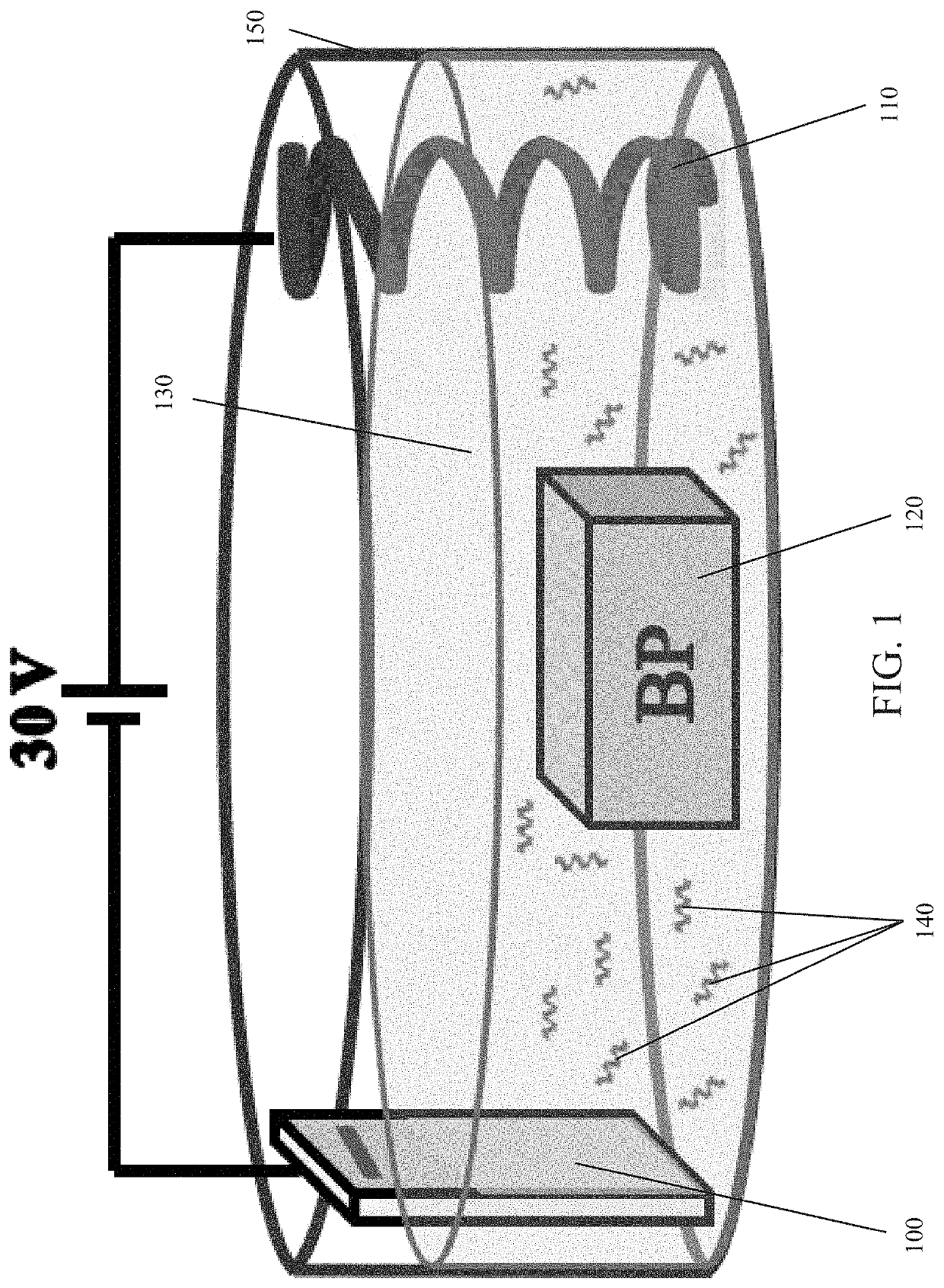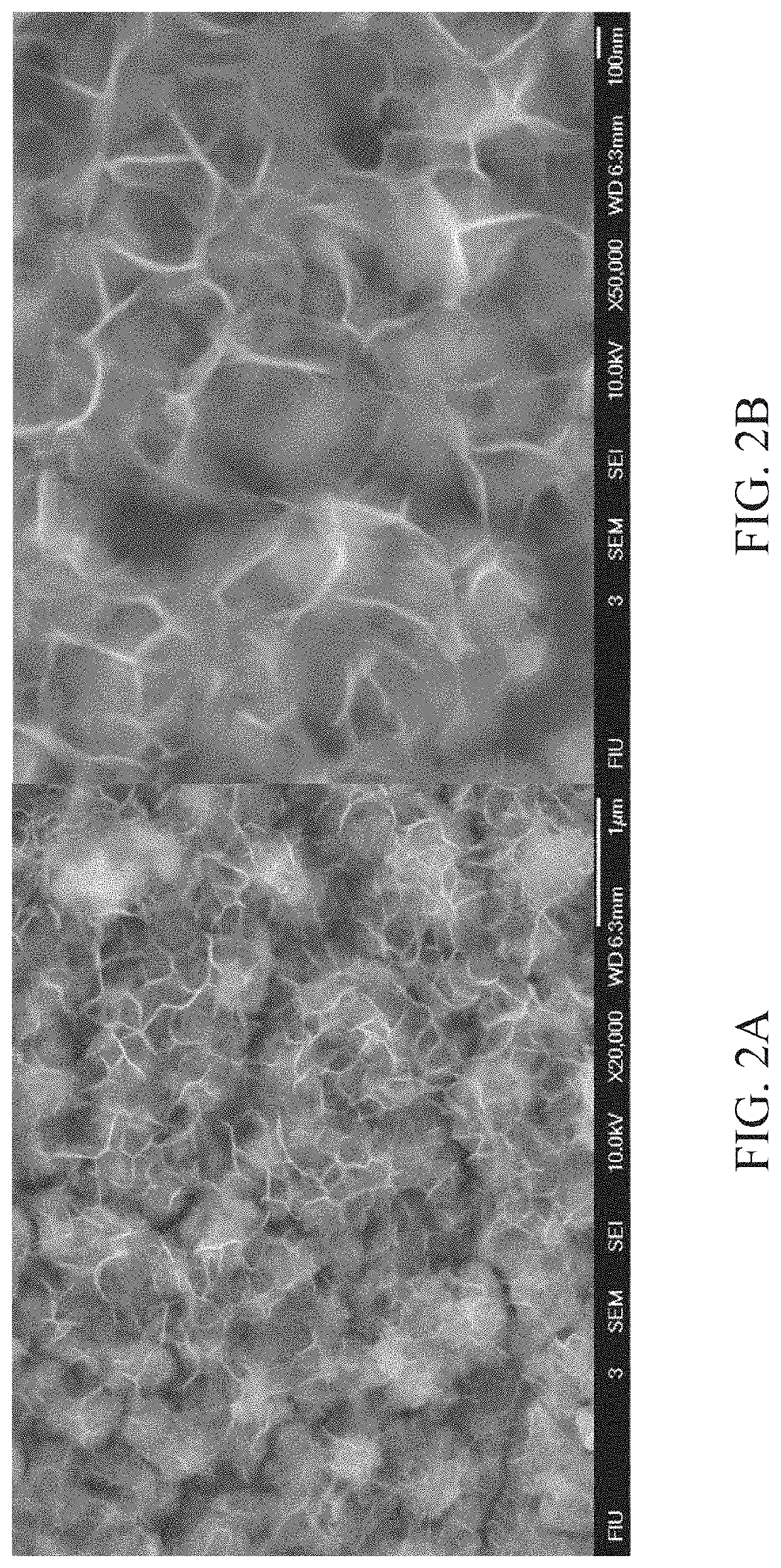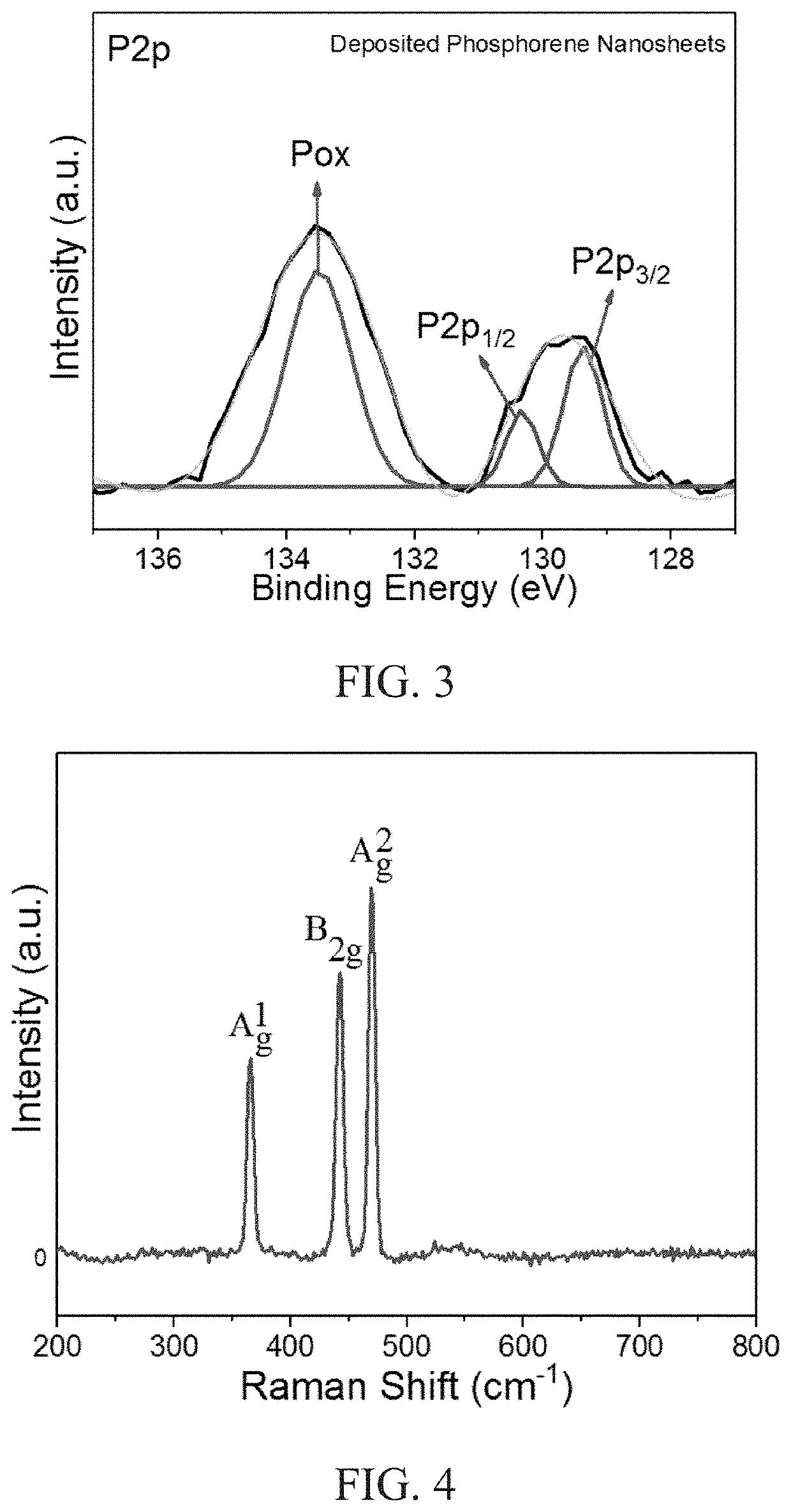Bipolar exfoliation and deposition of phosphorene onto negative feeding electrode
a phosphorene nanosheet, bipolar technology, applied in the direction of electrolysis components, electrolysis coatings, chemistry apparatus and processes, etc., can solve the problems of reducing the specific capacitance and affecting the efficiency of the phosphorene nanosheet. achieve excellent energy storage characteristics and high specific capacitan
- Summary
- Abstract
- Description
- Claims
- Application Information
AI Technical Summary
Benefits of technology
Problems solved by technology
Method used
Image
Examples
example 1
[0033]A system as shown in FIG. 1 was used for single-step exfoliation and deposition of 2D reduced phosphorene nanosheets from bulk BP. A Pt wire was used as the positive electrode, and the solvent was deionized water with no salts or other additives added. A voltage of 30 V was applied to the feeding electrodes for a period of 24 hours.
[0034]After 24 hours, the bulk BP did not show any noticeable change; however, deposition of a thin film on the negative electrode of the bipolar cell could be observed, and this thin film was the 2D reduced phosphorene nanosheet(s). FIGS. 2A and 2B (higher magnification) show SEM images of the negative feeding electrode that confirm the presence of 2D reduced phosphorene nanosheets, which were uniformly deposited on the negative feeding electrode. FIG. 3 shows phosphorus to phosphorus (P2P) XPS spectra of the phosphorene nanosheets deposited on the negative feeding electrode, and FIG. 4 shows the Raman spectra of the phosphorene nanosheets deposite...
PUM
| Property | Measurement | Unit |
|---|---|---|
| voltage | aaaaa | aaaaa |
| electric field | aaaaa | aaaaa |
| voltage | aaaaa | aaaaa |
Abstract
Description
Claims
Application Information
 Login to view more
Login to view more - R&D Engineer
- R&D Manager
- IP Professional
- Industry Leading Data Capabilities
- Powerful AI technology
- Patent DNA Extraction
Browse by: Latest US Patents, China's latest patents, Technical Efficacy Thesaurus, Application Domain, Technology Topic.
© 2024 PatSnap. All rights reserved.Legal|Privacy policy|Modern Slavery Act Transparency Statement|Sitemap



